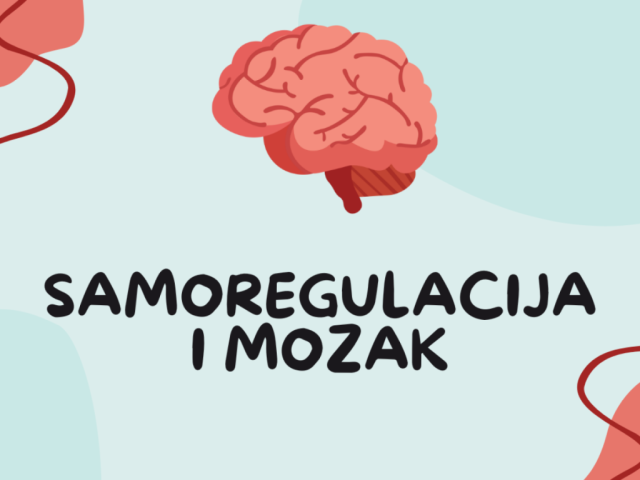

Brain and self-regulation
Self-regulation is one of our most important mechanisms, developing until nearly the age of 25 through proper stimulation and responses from the environment. There are other ways to promote the development of self-regulation, and one of the most effective is neurofeedback.

Imagine you are in a store during the pre-holiday rush, surrounded by a lot of people, noise, pushing, shouting, and commotion. If you’re anything like me, your tension starts to rise; you become more anxious, excited, or maybe even angry. However, that doesn’t mean you’ll throw all the items from your cart on the floor and run out of the store. You recognize your heightened arousal and activate your self-regulation mechanisms, completing your shopping as calmly and efficiently as possible. At home, you might vent to your family or friends and return to a state of balance.
The processes in which we recognize that we are overstimulated and overwhelmed, and consciously or unconsciously reflect on what to do to adapt to the current situation and the expectations others have of us, are called self-regulation.
Our brains are structured so that through maturation, we can organize all the stimuli we receive into some hierarchical relationship, determining what is more and less important, and then behaving based on that assessment. But what happens when we cannot evaluate and arrange our surroundings according to a hierarchy, when we are overwhelmed by external stimuli? Can we regulate our behavior? Perhaps we adults can, thanks to appropriate brain activity patterns and brain maturation. But what about children? And especially children with atypical development?
For self-regulation to occur, our brain must "function well," meaning neurons must be connected, and the brain activity pattern must be appropriate. If we lack a physiological basis for a behavior in our brain, we cannot perform it. However, we can also "train" our brain to function better. Environmental stimuli facilitate the creation of new connections between neurons or strengthen existing ones, leading to the development of memory potential. Renowned neurologist Ranko RajoviÄ states that when a child turns 5, their brain has formed 50% of synapses, 75% by age 7, and 95% by age 12. The environment is a crucial factor in the development of neurons and synapses, as well as in the overall development of the brain. This shows us that the brain has its developmental pace according to age— we do not expect a five-year-old to self-regulate as a ten-year-old does. It also tells us that what we "feed" our brain with is extremely important for its proper development. For instance, when a child is overly surrounded by screens and stimuli from video games, the brain is overwhelmed by excessive stimulation and cannot navigate the "real world." If a child is surrounded by appropriate stimulation, their brain develops at a suitable pace, creating a physiological foundation for the development of self-regulation. This can be observed in situations where a child can regulate their emotional reactions when things don’t go their way, waits patiently for their turn, or listens to an adult's instructions.
For a child to develop self-regulation, they need to be in an appropriate environment with clear rules, structure, and situations where they can practice these skills—no one learns to self-regulate if everything always goes their way.
Here is where we parents come in, as we need to be those external regulators from the earliest age. If the parent's response to a child's behavior is appropriate, we can expect the child to learn to regulate their behavior. It’s also important how we react in situations where an appropriate response is expected, as children learn by modeling, and parents are the primary role models in early childhood. It’s crucial for parents to acknowledge the child's emotions, name them, and help the child learn to recognize them, but it’s equally important to set boundaries. Thanks to these boundaries, children feel secure in the presence of their parents, and precisely because they know their parents will set firm limits, they can learn to regulate their behavior. Regardless of what the behavior is, the message "Mom and Dad are here, and I feel safe" is what the child needs to receive. It’s not always easy to respond appropriately to a child's emotional reactions, but we must remember that consistency is the only way to expect results, and we need to be patient for those results to manifest.
Our psychologist, Josipa, has created an online course that explains the relationship between brain development, brain activity patterns, and the development of self-regulation. In the course, you will find specific advice for situations we have all encountered, which can help you start supporting your child's healthy development of self-regulation right away. We also offer games that help you spend quality time with your child while creating a nurturing and warm relationship and fostering the healthy development of self-regulation. The course is available on the online platform Udemy and is currently offered at a discount through this link.
One way we can encourage the brain to learn self-regulation is through neurofeedback. This method provides clear and enjoyable feedback on brain function, allowing the brain to learn to change ineffective patterns of operation to new ones that lead to improvements in behavior. The primary goal is to find what optimal functioning is for the individual, which also leads to balance in the body and maximizes their potential. You can read more about the method here.

